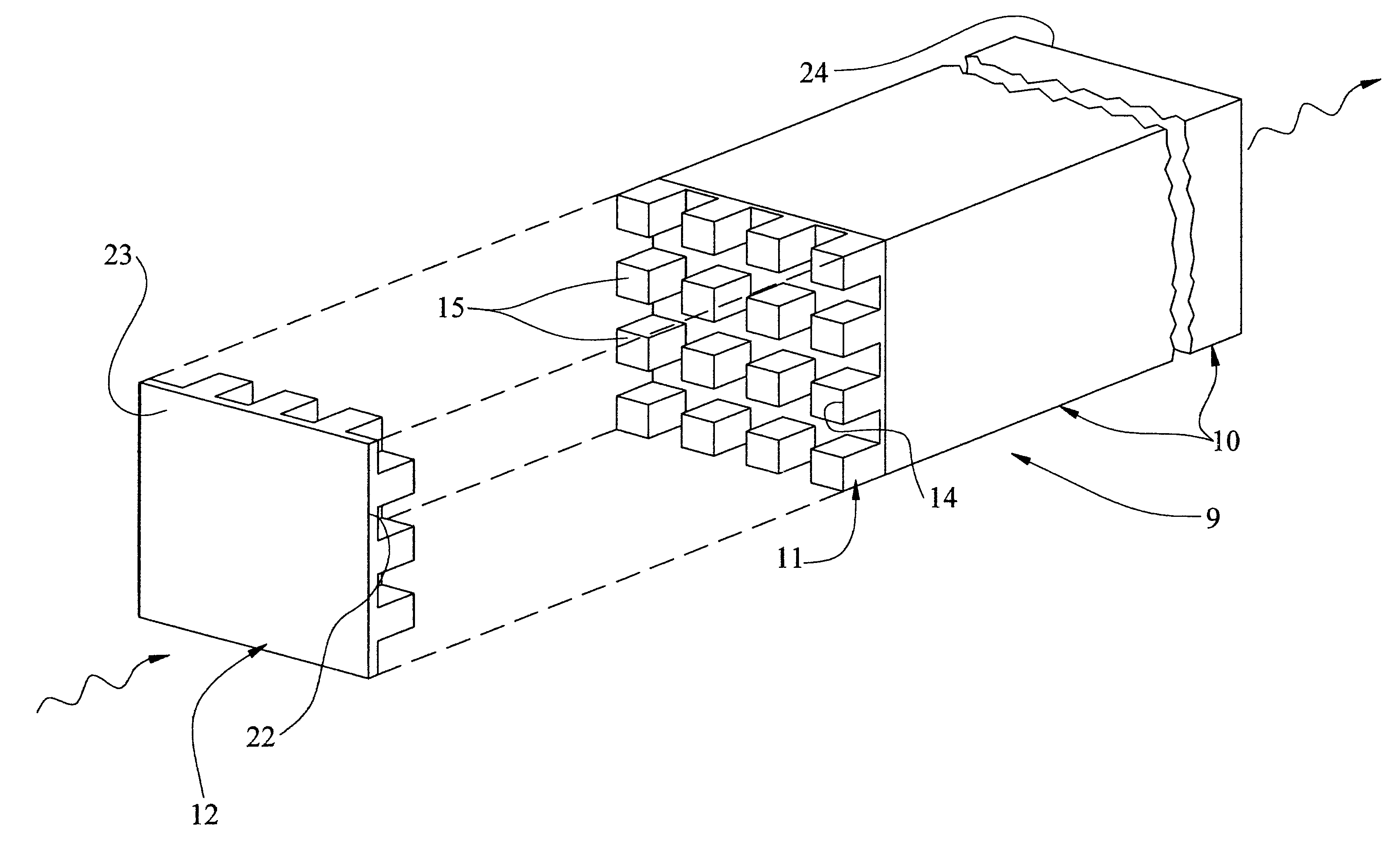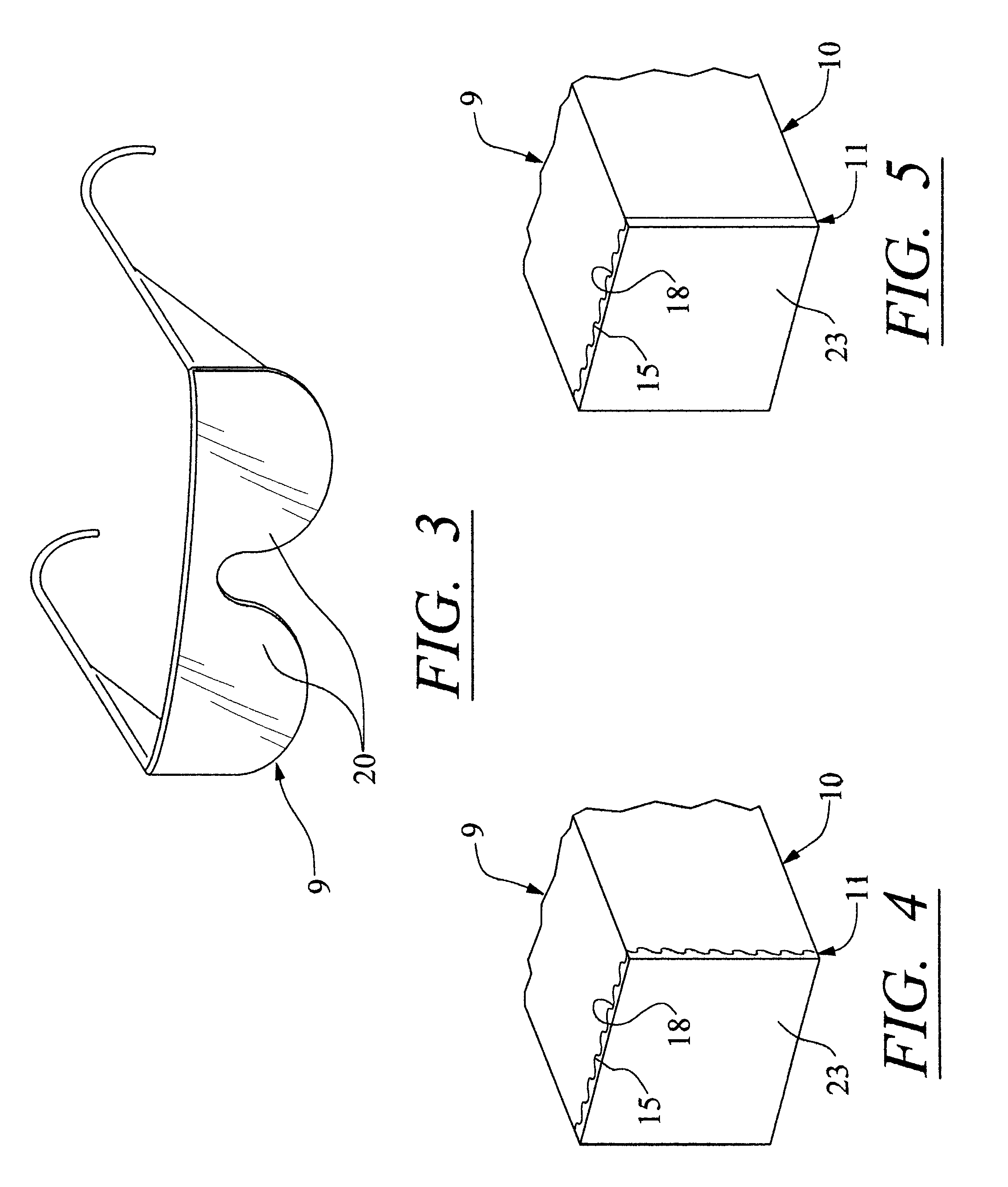High dispersion, laser protection lens
a laser protection and high dispersion technology, applied in non-linear optics, instruments, blood vessels, etc., can solve the problem of not being able to achieve the effect of avoiding laser protection lenses as effectively as possible, and achieve the effect of reducing the intensity of received laser radiation
- Summary
- Abstract
- Description
- Claims
- Application Information
AI Technical Summary
Benefits of technology
Problems solved by technology
Method used
Image
Examples
Embodiment Construction
One principle of the invention is that the incoming radiation of a wavelength for which there is significant absorption in the absorption-portion of the lens will raise the temperature of the lens, thereby changing its index of refraction, and therefore altering the phase of the radiation as it exits the lens. If adjacent portions of the lens have absorption-portions of differing absorption, then the radiation exiting those different portions will be at different phases, and will therefore interfere, producing thermal blooming, which will disperse the radiation away from a focal point, thereby lowering the flux density of radiation at a point of interest, such as the retina or the light responsive portion of an optical equipment. The change in phase of radiation passing through the absorbing medium of the invention is given as ##EQU1##
where:
.DELTA..phi.=the change in phase due to absorption raising the temperature and thus changing the index of refraction
.mu..sub.T =the temperature ...
PUM
 Login to View More
Login to View More Abstract
Description
Claims
Application Information
 Login to View More
Login to View More - R&D
- Intellectual Property
- Life Sciences
- Materials
- Tech Scout
- Unparalleled Data Quality
- Higher Quality Content
- 60% Fewer Hallucinations
Browse by: Latest US Patents, China's latest patents, Technical Efficacy Thesaurus, Application Domain, Technology Topic, Popular Technical Reports.
© 2025 PatSnap. All rights reserved.Legal|Privacy policy|Modern Slavery Act Transparency Statement|Sitemap|About US| Contact US: help@patsnap.com



